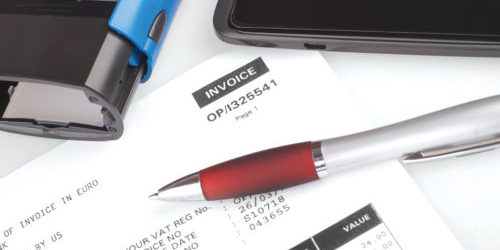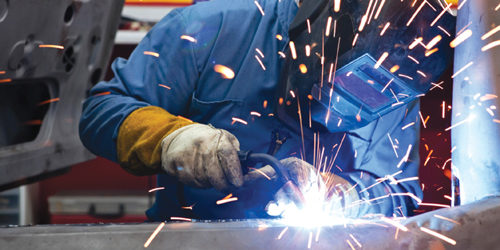
So called “VAT carousel” frauds can cost HMRC millions, and at the same time, a surprisingly large number of innocent companies find themselves inadvertently caught up in the chains of related transactions. Michael Axe looks at how HMRC has the power to pursue those innocent companies for the VAT “stolen” by the fraudsters, as well as the steps that innocent companies can take to protect themselves from being held liable for HMRC’s losses.
“VAT carousel” fraud – now also commonly known as “missing trader intra-community” fraud (or “MTIC” fraud for short) – has been around for many years. In fact, it has been around ever since fraudsters first started exploiting the VAT rules which state that cross-border transactions between EU Member States are zero-rated for VAT purposes.
However, many UK companies do not appreciate how innocent parties caught up in the fraudsters’ “carousel” can be left bearing significant tax liabilities to HMRC after the fraudsters have disappeared.
What is MTIC fraud?
In its simplest form, although in practice there are many variants, MTIC fraud involves a company that is registered for VAT in one EU Member State (“the Overseas Seller”) selling goods to another company (“the Importer”) that is registered for VAT in a different EU Member State (the UK, in this example). The Overseas Seller then claims VAT refunds in its own Member State for any VAT which it paid when buying the goods for export. The Importer, meanwhile, does not have to pay any VAT on goods imported from another EU Member State, but it will charge VAT when it resells the goods to a VAT registered company in the same Member State (“the Buffer”).
The Buffer is usually the innocent party in the chain of transactions, and is usually not one of the fraudsters. A fourth VAT registered company (“the Broker”), which may be one of the fraudsters or could be another innocent party, will then buy the goods from the Buffer, with the Buffer charging VAT as normal on that sale, and accounting to HMRC for both the VAT it paid to the Importer, and the VAT it charged to the Broker. The Broker, having paid VAT to the Buffer, will then be able to reclaim the VAT it paid back from HMRC (either as an actual refund or as a reduction in its own VAT liability). The Importer then goes missing (becoming the “missing trader”) without paying any VAT to HMRC. The Broker will then re-export the goods out of its Member State (in this case, the UK), without having to charge VAT on goods exported to another EU Member State. Finally, the original Overseas Seller will reacquire the goods and start the “carousel” all over again.
The end result, as summarised in the diagram below, is that both the Overseas Seller and the Broker are able to obtain full VAT refunds in their respective Member States, while the “missing trader” Importer absconds with the VAT paid to it by the innocent Buffer, which should have been paid to HMRC.
The goods used in MTIC frauds are usually high value, easily transportable goods, so that the VAT paid by the innocent Buffer (and stolen by the “missing trader”) can be maximised. Early MTIC frauds involved goods such as computer chips (CPUs), mobile phones, iPods and similar electronic devices, but fraudsters are becoming more creative, and recent cases have involved items such as razor blades, white goods, and even EU Emission Allowances. Given the high value of such goods, HMRC can be defrauded out of significant sums of VAT on a single “VAT carousel” transaction.
How does this affect innocent parties?
In the above simple example, the Overseas Seller, the Importer, and the Broker are in on the fraud, but the Buffer (the party which actually pays the VAT that is stolen by the “missing trader” Importer) is the innocent party. In more complex MTIC frauds, there will often be a long chain of resales to multiple Buffers, and sometimes there can even be several different chains of sales and resales (some not even involving the “dirty” goods at all, so-called “contra-chains”) taking place in a single “carousel” fraud, all involving several different innocent Buffers and an innocent Broker.
Some complex “carousel” chains have been known to involve up to 600 different companies – so the risk of an innocent company becoming unwittingly involved in an MTIC fraud cannot be underestimated.
Perhaps unsurprisingly, by the time an MTIC fraud is uncovered by HMRC, it is not unusual for all of the fraudsters to have disappeared and/or for them to have left their VAT registered companies as empty shells (with their officers difficult to trace or identify). Quite often, therefore, the innocent Buffer(s) (and Broker) are the only companies left in the “carousel” chain (a) which HMRC can trace and (b) which have any assets for HMRC to pursue.
HMRC’s additional powers
In an effort to combat the rise in MTIC fraud, various pieces of legislation have been introduced in the UK over the years. However, this has often proved somewhat ineffective as the legislation has focused on amending the VAT rules for specific types of goods (such as mobile phones, CPUs, telecoms, games consoles and even on supplies of gas and electricity) so that the VAT burden is reversed, meaning that the customer (i.e. the Buffer) has to account to HMRC for the VAT, rather than the supplier (i.e. the “missing trader” Importer). However, when these reverse VAT charges are brought in for specific types of goods, the fraudsters will usually simply move on to using different types of goods in their frauds.
Therefore, in the fight against MTIC fraud, arguably the most effective piece of legislation is that which enables HMRC (in certain circumstances) to pursue the innocent companies who purchased the goods directly or from other Buffer companies which originate from the “missing trader” Importers. In such cases, although the “innocent” companies were not actually in on the fraud itself, HMRC can still pursue them for the VAT defrauded by the “missing trader” Importer if the Buffer (or Broker) “knew or should have known” that the “missing trader” Importer would not pay the VAT due to HMRC. As there will often be warning signs (such as those discussed in the section below) in MTIC fraud “carousels”, there can be grounds for HMRC to argue that an innocent Buffer or Broker should nevertheless have suspected that the “missing trader” Importer was involved in a VAT fraud.
The effect of these rules is that, if HMRC can objectively show that the innocent company knew or should have known that the transaction was fraudulent, then HMRC can recover the defrauded VAT by denying that company the right to deduct input tax.
The purpose of these rules is to transfer the risk in the fraudulent transactions from HMRC to the other traders in the chain, by making them more responsible and accountable for the VAT arising from the chain of transactions of which they were a party, and with the incentive of encouraging the trader to more carefully question the legitimacy of those transactions.
How can innocent companies protect themselves?
First and foremost, companies should be wary of transactions that sound too good to be true, or which are outside of the way in which they normally carry out their business. For example, in some MTIC frauds a Buffer or Broker company will be approached by one company offering to sell them goods at a discounted price, and then almost immediately, they will be approached by another company offering to buy the same type of goods. In fact, it is quite common for the transactions in an MTIC fraud to all happen on the same day, so the Buffer/Broker doesn’t actually have the goods for any length of time at all (and in some cases, the whole transaction occurs on paper, and the Buffer/Broker never even takes delivery of the goods!).
This is (arguably) a fairly obvious example of a suspicious transaction, but often innocent companies can become “distracted” by how good a deal sounds, and overlook such concerns. In some more incriminatory cases, companies may even willingly turn a “blind eye” and deliberately “ask no questions” about goods they are offered at discounted prices.
Ultimately, the test to be applied is whether or not the Buffer company “knew or should have known that, by his purchase, he was taking part in a transaction connected to a fraudulent evasion of VAT”. If it can be shown that the Buffer company did know (or should have known), then it will be considered an accomplice to the fraud.
This test is, of course, very fact specific, and there are many cases that have dealt with the circumstances in which an “innocent” company can be said to have known (or should have known) about a VAT fraud. There is, however, some comfort for such companies, as the burden of proof is on HMRC, and the bar to be reached is a high one. To show that a company “should have known” about a VAT fraud, HMRC will need to show that “the only reasonable explanation for the transaction… was that it was connected with fraud.”
How can RB help?
A surprisingly large number of innocent companies find themselves caught up in MTIC frauds. If you are unfortunate enough to find yourself in such a position, swift action can make all the difference. At RB, our specialist Tax Disputes Team works closely with specialist tax accountants and leading tax counsel, to ensure that the necessary technical expertise is at hand when you need it. Not only can we can assist at an early stage as soon as you suspect you may have been inadvertently caught up in an MTIC fraud carousel, but we can also provide the necessary expertise in dealing with any investigation or proceedings commenced by HMRC.
For more information on this or any other issue relating to tax disputes, please contact Clive Lee or
Michael Axe on +44 (0)1293 527744






